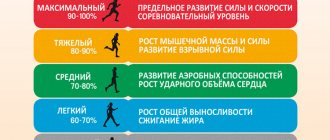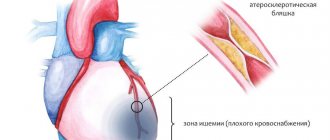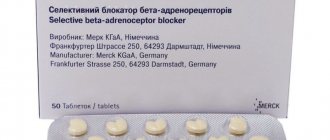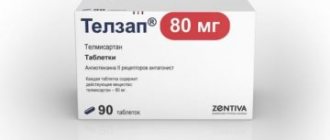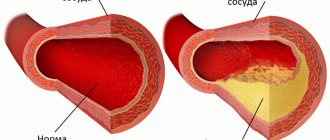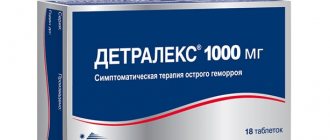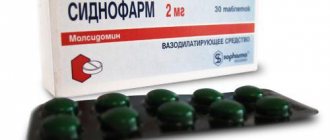2
Author of the article: Marina Dmitrievna
2017.11.11
945
Drugs
Plavix is a drug containing clopidogrel. It is used for the treatment and prevention of cardiovascular diseases. The official international nonproprietary name of Plavix is clopidogrel. In the classification of pharmacological agents ATC, the drug is designated in Latin letters and numbers B01AC04.
The drug "Plavix"
Eliquis
The drug has the same indications, side effects and contraindications as Xarelto, but has a lower price.
A package of Eliquis 5 mg No. 60 costs about 2,550 rubles. The recommended dose for thrombosis and pulmonary embolism is 10 mg; for prevention, 5 mg of Eliquis is prescribed. Therefore, the savings are insignificant. The dose is adjusted depending on weight, gender and age. The concentration of the drug in plasma is approximately 30% higher in elderly patients and 18% in women. For patients weighing more than 120 kg, the dosage is increased.
pharmachologic effect
According to the instructions for use, the medication contains the active substance clopidogrel and is classified as an antiplatelet agent. Therapeutic actions provided:
- thins the blood;
- restores normal platelet function;
- reduces the risk of stroke, myocardial infarction, thromboembolism, vascular death;
- when combined with acetylsalicylic acid, reduction of major vascular complications;
- reduction in the total number of days of hospitalization.
Contraindications
Before starting treatment, you must carefully read the instructions for use of Plavix to better understand whether there are any contraindications.
The medicine is strictly prohibited for use by pregnant women and nursing mothers, patients under the age of 18, with existing internal bleeding, pathological changes in the liver, intolerance to the components of the drug, as well as lactose, with tuberculosis or lung tumors.
The medication should be used with caution if there is a tendency to hemorrhages, cerebral circulatory disorders, moderate pathologies of the liver and kidneys (due to insufficient experience in clinical use), after injuries and operations, when using antidepressants, non-steroidal anti-inflammatory drugs, as well as Aspirin, Heparin ", "Warfarin".
Warfarin
The drug is produced in Denmark, Finland, and Russia. The price differs depending on the manufacturer. The average cost of Warfarin 2.5 mg No. 100 is from 70 to 180 rubles.
The medicine is prescribed for venous thrombosis, pulmonary embolism, and prevention of thromboembolism. The use of Warfarin helps reduce blood clotting by inhibiting the synthesis of vitamin K in the liver. The drug begins to act after 2-3 days; after a course of therapy, the content of coagulation factors is restored after 4-5 days.
The drug has identical indications and contraindications to previous anticoagulants, but bleeding and hemorrhage more often occur during treatment.
Warfarin is taken once a day. The dosage is adjusted according to the INR results. Typically it ranges from 2.5 to 7.5 mg per day. Elderly people and patients weakened by illnesses are shown lower doses.
Warfarin is a good and inexpensive substitute for Xarelto, but not all patients are satisfied with regular INR monitoring. In addition, during treatment you will have to exclude foods containing large amounts of vitamin K.
Cardiovascular pathologies are the leading causes of death in the world. One of the reasons for the development of heart attacks, ischemic heart disease and ischemic strokes is thrombosis and thromboembolism.
To treat pathologies in the cardiovascular system, doctors recommend that patients take Warfarin or Xarelto.
To treat pathologies in the cardiovascular system, doctors recommend that patients take Warfarin or Xarelto. These drugs are analogues of each other in terms of therapeutic effects on the patient’s body.
Warfarin is produced in the form of round tablets that are light blue in color. A cross-shaped mark is applied to the surface of each tablet. The drug is packaged in plastic bottles of 50 and 100 tablets.
The active component of the drug is warfarin sodium. The role of additional components is performed by:
- corn starch;
- lactose;
- indigo carmine dihydrate calcium hydrogen phosphate;
- magnesium stearate;
- povidone 30.
Under the influence of warfarin, the body blocks the synthesis of vitamin K-dependent blood clotting factors in the liver tissues. Under the influence of the active component, the amount of these coagulation factors in the blood plasma decreases, which leads to a slowdown in coagulation.
The first effect of taking the medicine is observed after 36-72 hours. The maximum therapeutic effect is achieved 5-7 days after the start of drug therapy. Restoration of the activity of vitamin K-dependent coagulation factors occurs 4-5 days after stopping the drug.
The medicine is quickly absorbed from the lumen of the digestive system into the bloodstream. Metabolism of the active component occurs in the liver tissues.
Indications for the use of Warfarin are:
- venous thrombosis in acute or recurrent form;
- pulmonary embolism;
- strokes;
- transient ischemic attacks;
- prevention of thromboembolic complications after myocardial infarction;
- secondary prevention of myocardial infarction;
- prevention of thromboembolic complications in the presence of heart valve lesions, atrial fibrillation, as well as in patients who have undergone heart valve replacement;
- prevention of postoperative thrombosis.
Warfarin is used to prevent thromboembolic complications after myocardial infarction.
When prescribing the drug, one should take into account the patient’s possible contraindications to the use of the drug, these may include:
- high sensitivity to the components of the product;
- acute bleeding;
- severe pathologies that impair the functioning of the liver and kidneys;
- the first trimester of pregnancy and the last 4 weeks of pregnancy;
- acute DIC syndrome;
- thrombocytopenia;
- lack of proteins C and S;
- varicose veins of the digestive tract;
- arterial aneurysm;
- increased risk of bleeding;
- hemorrhagic disorders;
- stomach and duodenal ulcers;
- severe wounds, including post-operative wounds;
- lumbar puncture;
- bacterial endocarditis;
- malignant hypertension;
- intracranial hemorrhage;
- hemorrhagic stroke.
During drug therapy with Warfarin, the patient may experience the following side effects:
- bleeding;
- increased sensitivity to Warfarin after a long course of taking the drug;
- pain in the abdominal area;
- vomiting;
- diarrhea;
- anemia;
- increased activity of liver enzymes;
- eosinophilia;
- hives;
- jaundice;
- eczema;
- skin necrosis;
- skin itching;
- rash;
- jade;
- urolithiasis;
- vasculitis;
- tubular necrosis.
Bleeding occurs in 8% of patients receiving Warfarin. In some cases, during treatment with Warfarin, patients experience the development of coumarin necrosis. This phenomenon begins its development with the appearance of swelling and darkening of the skin of the buttocks and legs.
In rare cases, the patient may develop hand-foot syndrome. The development of this pathology is typical for men suffering from atherosclerosis.
If the recommended dosage is observed, the patient may experience minor bleeding. If the latter occurs, the dose of the drug used is adjusted or the medication is discontinued for a certain period.
In the event of severe bleeding as a result of a drug overdose, treatment begins with the introduction of vitamin K into the body. The patient is prescribed activated charcoal and fresh frozen plasma or a concentrate of blood clotting factors is injected into the circulatory system.
After carrying out the necessary therapeutic measures, it is necessary to monitor the patient’s condition for some time, which is associated with a long period of removal of Warfarin from the body, which is 20-60 hours.
You can purchase the drug at the pharmacy using a prescription written in Latin.
The shelf life of the medicine is 5 years, the cost of the medicine is from 115 to 180 rubles. depending on the volume of packaging.
Action of Xarelto
The active ingredient in Xarelto is micronized rivaroxaban. Auxiliary compounds in the composition of the drug are:
- microcrystalline cellulose;
- croscarmellose sodium;
- hypromellose 5cP;
- lactose monohydrate;
- magnesium stearate;
- sodium lauryl sulfate.
The drug is produced in tablet form; the tablets are round in shape and colored pink or red-brown. One package can contain from 5 to 100 tablets.
Prevention of stroke and systemic thromboembolism in non-valvular atrial fibrillation is performed using the drug Xarelto.
The tablet form of the drug has a film coating, which includes the following components:
- red iron oxide dye;
- hypromellose 15cP;
- titanium dioxide;
- macrogol 3350.
The drug is a direct-acting anticoagulant.
Indications for use of the drug are:
- prevention of venous thromboembolism after large-scale orthopedic operations in the lower extremities;
- prevention of stroke and systemic thromboembolism in non-valvular atrial fibrillation.
When prescribing the drug, one should take into account the patient’s possible contraindications to the use of Xarelto, these may be:
- active bleeding affecting especially important organs - the gastrointestinal tract, intracranial area;
- liver pathologies accompanied by coagulopathy, causing the risk of bleeding;
- period of lactation and pregnancy;
- patient age less than 18 years;
- lactase intolerance and glucose-galactose malabsorption;
- hypersensitivity to rivaroxaban and other components.
Carrying out drug therapy with the use of Xarelto can provoke the appearance of a whole range of side effects, among which the most common are the following:
- anemia;
- attacks of nausea;
- increased activity of liver enzymes;
- hemorrhages after procedures;
- postoperative anemia and bleeding from wounds.
- thrombocythemia;
- increased platelet count;
- tachycardia;
- arterial hypotension;
- constipation;
- diarrhea;
- pain and discomfort in the abdominal area;
- dyspepsia;
- dry mouth;
- dizziness;
- headache;
- short-term loss of consciousness;
- bleeding from the gastrointestinal tract, nose, hematuria, hemorrhage from the genital tract;
- local swelling, deterioration of health;
- fever;
- allergic reactions.
In case of overdose, the development of hemorrhagic disorders is recorded and the risk of possible bleeding increases.
The medicine is sold only by prescription. The cost of Xarelto ranges from 1226 to 3020 rubles. depending on the number of tablets.
Both drugs have an anticoagulant effect on the body, preventing the formation of blood clots in the vascular system. Medicines contain different active and additional components.
Xarelto has fewer contraindications for use and side effects compared to Warfarin. The use of Xarelto is less likely to provoke bleeding.
The disadvantage of Xarelto is the neutralization of the therapeutic effect of the drug when consuming foods high in vitamin K. When used for the treatment of Xarelto, less frequent dosage adjustments and rare monitoring of the effectiveness of blood clotting are required.
Warfarin is a domestically produced drug. The only advantage of this product over Xarelto is its low cost. The quality of Xarelto is superior.
Only the attending physician can determine which drug is best to use for drug therapy, taking into account the test results and the characteristics of the patient’s body.
The drug Warfarin is produced in Russia. The cost of this drug is many times lower compared to Xarelto.
Replacing Warfarin with Xarelto is carried out only by the decision of the attending physician. Changing the drug yourself is strictly prohibited.
Doctors' opinion
Nikolay, phlebologist, Tomsk
Warfarin is a time-tested drug that in my practice is most often used to treat deep vein thrombosis. This is the only oral anticoagulant prescribed after vena cava filter implantation.
Side effects
Side effects identified during clinical studies:
- From the digestive system: often (≥1% and <10%), - diarrhea, abdominal pain, dyspeptic disorders; uncommon (≥0.1% and <1%) – constipation, bloating, nausea, vomiting, gastritis, gastric and duodenal ulcers;
- Hemorrhagic disorders: uncommon - increased bleeding time, gastrointestinal bleeding, epistaxis, bruising/purpura; rarely (≥0.01% and <0.1%) - hematomas, ocular hemorrhages (mainly conjunctival), hematuria;
- From the hematopoietic system: uncommon – leukopenia, eosinophilia, decreased number of platelets or neutrophils in peripheral blood;
- From the nervous system: infrequently – paresthesia, headache; rarely - dizziness.
Side effects identified during post-marketing studies (frequency unknown):
- Hemorrhagic disorders: serious subcutaneous bleeding, musculoskeletal, ocular hemorrhages (conjunctival, retinal and eye tissue), nosebleeds, bleeding from the respiratory tract (hemoptysis), bleeding from postoperative wounds, hematuria, fatal bleeding (including intracranial and retroperitoneal hemorrhages, gastrointestinal bleeding);
- From the hematopoietic system: aplastic anemia/pancytopenia, granulocytopenia, thrombotic thrombocytopenic purpura, agranulocytosis, acquired hemophilia A;
- From the nervous system: disorders of taste perception;
- Mental disorders: hallucinations, confusion;
- From the respiratory system: interstitial pneumonia, bronchospasm, eosinophilic pneumonia;
- From the digestive system: stomatitis, pancreatitis, colitis (including ulcerative or lymphocytic), non-infectious hepatitis, acute liver failure;
- From the urinary system: glomerulonephritis;
- From the cardiovascular system: decreased blood pressure, vasculitis;
- From the musculoskeletal system: arthritis, arthralgia, myalgia;
- Dermatological reactions: exfoliative, erythematous or maculopapular rash, pruritus, urticaria, bullous dermatitis (Stevens-Johnson syndrome, erythema multiforme, toxic epidermal necrolysis), angioedema, lichen planus, eczema, drug rash with eosinophilia and DRESS syndrome, syndrome drug hypersensitivity;
- Allergic reactions: serum sickness, anaphylactoid reactions, cross-hematological and allergic reactions with other thienopyridines;
- Other: fever;
- Laboratory and instrumental data: increased creatinine concentration in the blood, abnormal laboratory parameters of liver function.
Scheme of application and indications
A drug based on clopidogrel is prescribed when other antithrombotic agents (in particular, acetylsalicylic acid) are ineffective, in combination with ASA in the following cases:
- acute coronary syndrome;
- after stenting and coronary artery bypass surgery;
- acute myocardial infarction;
- prevention and treatment of recurrent heart attack and stroke.
The drug for thinning the blood and preventing vascular complications has good reviews from doctors and patients and is well tolerated. The disadvantage is the high price (from 900 rubles for 30 tablets, up to 3500 for 100 pieces) and availability only in certain pharmacy organizations. Therefore, the question of Plavix and its analogues, which drugs are better, and the characteristics of administration is relevant.
Prices for analogues of Plavix 75 mg and manufacturing countries
| Analogue | Price, in rubles | Manufacturer country |
| Plavix | 900-3500 | France |
| Cardiomagnyl | 130-400 | Germany or Denmark |
| Aspirin Cardio | 800-300 | Germany |
| Coplavix | 1100-4500 | France |
| Acetylsalicylic acid | 3-50 | Russia |
| Lopirel | 250-1400 | Malta |
| Eliquis | 800-2700 | Puerto Rico |
| Thrombo ass | 40-180 | Austria |
| Pradaxa | 1800-11000 | Germany |
| Plagril | 400-750 | India |
| Brilinta | 2500-15500 | Sweden |
| Xarelto | 1300-12000 | Germany |
| Clopidogrel | 150-1300 | Russia |
| Sylt | 500-2300 | Slovenia |
Cardiomagnyl
An analogue of Plavix, Cardiomagnyl, is based on the action of acetylsalicylic acid. Available in two dosages - 75 and 150 mg, available freely without a doctor's prescription. Additionally contains magnesium hydroxide, which protects the gastric mucosa from irritation. Substitutes for Cardiomagnyl with the same composition are Trombital, Fazostabil, Trombomag.
Patients are interested in the question of whether to take Plavix and Cardiomagnil together or separately. It is possible to prescribe antithrombotic drugs together: Plavix in the morning, Cardiomagnyl before bedtime. Upon discharge, you should check with the treating cardiologist, since the order of administration may be affected by additional medications used.
Aspirin Cardio
The source of acetylsalicylic acid for thinning the blood and preventing heart attack, stroke and thromboembolism is the German medicine Aspirin Cardio. It is sold freely from pharmacies and is produced in two dosages - 100 and 300 mg. Possible combination with Plagril, Plavix and structural analogues.
Coplavix
A substitute for Plavix is the French drug Coplavix, containing 75 mg of clopidogrel and 100 mg of acetylsalicylic acid (ASA). The advantage of the analogue is its convenient use and replacement of individual medications. As a result, improved platelet functionality is observed and the risk of vascular complications is reduced.
Aspirin
Pure Aspirin or acetylsalicylic acid is available in 500 mg tablets. One-fourth of the tablet is taken for high blood pressure and the risk of heart attack to prevent thrombosis and complications. The price of this analogue of Plavix is up to 50 rubles. Aspirin has a negative effect on the mucous membrane of the stomach and intestines and can lead to erosions, ulcers and bleeding. The disadvantage of the drug is the need for division; it is possible that the required amount of ASA is exceeded or undersupplied.
Lopirel
A cheaper analogue of Plavix is Lopirel. Also contains clopidogrel at a dosage of 75 mg. It has the same indications, contraindications, and adverse reactions. It is possible to use it together with acetylsalicylic acid to enhance the effect or use the complex drug Lopirel Combi.
Eliquis
The original drug Eliquis is based on the substance apixaban, which is a direct anticoagulant. It is used for the prevention and treatment of thromboembolism, thrombosis and stroke, after knee and hip joint replacement. Dispensed with a doctor's prescription. The frequency of administration is twice a day for a long time.
Thrombo ACC
The Austrian analogue of Trombo ACC is a source of acetylsalicylic acid, available without a prescription. Indicated for the prevention of acute heart attack in the presence of risk factors, stroke, cerebrovascular accident, thromboembolism and thrombosis. Available in two dosages - 50 and 100 mg. Taken once a day.
Xarelto
The German drug Xarelto is available in dosages of 2.5, 10, 15 and 20 mg and is an anticoagulant. The medicinal properties are provided by the active component included in the composition - rivaroxaban. Used after surgery on the lower extremities to prevent thromboembolism once a day.
Pradaxa
A substitute for Plavix, Pradaxa, is an original anticoagulant that has been clinically studied in patients. Belongs to the group of direct thrombin inhibitors. Based on the active substance – dabigatran.
Used to prevent and treat deep vein thrombosis, thromboembolism, better after stenting than similar analogues.
Available in capsules of different dosages (75, 110, 150 mg) and taken 1-2 times a day. The dosage and frequency of administration is determined by a specialist individually.
Both drugs are prescribed for the prevention of venous thromboembolism in patients after surgery. There are no other indications for Xarelto in the instructions. The study of the drug continues and it is expected to be prescribed in the following situations:
- treatment and prevention of pulmonary embolism;
- prevention of stroke in atrial fibrillation;
- prevention of thrombosis in acute coronary insufficiency.
The indications for Pradaxa are broader. It is used to prevent thrombosis due to heart failure, atrial fibrillation and other conditions.
The drug regimen is similar. The tablet or capsule should be taken orally with a small amount of water. No connection with food intake. The dosage and frequency of therapy are determined by the doctor based on the specific clinical situation.
Important! Anticoagulants should be taken strictly at the same time every day. Missing a dose for one day increases the risk of thrombosis by 50%, and for two days – by 75%. The development of a stroke is possible. If you miss a drug, follow the instructions, and if necessary, consult a doctor.
NOAC, according to European recommendations, are declared as drugs that do not require constant monitoring of blood counts. This compares favorably with older warfarin-based drugs. But practicing doctors are in no hurry to switch to the new system. In some cases, control of the hemostatic system is justified - it reduces the risk of complications.
Most often, the drug Warfarin acts as a cheaper analogue.
Can it replace Xarelto? The fact is that Warfarin is an indirect anticoagulant and provides a different process of blood thinning, slows down the process of blood clotting, which has its disadvantages, contraindications and complications. The main advantage is financial accessibility. The cost is about 100 rubles per package.
A similar drug is Warfarex with the same active ingredient and cost.
These anticoagulants, in addition to side effects, have a main drawback - the need for constant monitoring of blood clotting (INR). If taken incorrectly, medications can be useless or cause serious complications. We cannot prescribe these and similar drugs to ourselves at will.
Another direct-acting drug worthy of attention is Pradaxa. This is a patented anticoagulant drug from the German company.
Unlike Xarelto, it has more contraindications and is usually always compared with Warfarin. You need to take a little more of this drug than Xarelto (1-2 tablets are the general recommendation). Pradaxa works well for preventive purposes specifically after orthopedic surgery on the knee and hip joints.
A big plus: when taking Pradaxa, you also do not need to constantly monitor blood clotting parameters (INR norm), which allows doctors to widely prescribe it along with Xarelto.
Of the minuses: the price of the drug is similar to the price of Xarelto. You won't gain much if you try to replace Xarelto with Pradaxa. In any case, all prescriptions should be made only by your attending physician.
Therefore, I will no longer list other anticoagulant drugs to replace Xarelto. The purpose of this article is not to exchange one chemical for another, cheaper one, but how to use natural components to eliminate blood thickening, blood clotting disorders, disease of the veins of the lower extremities and the formation of blood clots.
Brief characteristics of the drug
It is an antiplatelet agent that prevents platelets from sticking together, protecting against thrombosis. In medical practice, it is prescribed as the main medication or prophylactic drug. It is often used to reduce the risk of heart attack, stroke and other cardiovascular pathologies.
The drug forms the basis for complex treatment of patients who have suffered a heart attack or stroke. When properly prescribed, it restores blood circulation in peripheral vessels. After treatment is discontinued, platelet functions quickly return to normal. They are optimized at the same speed as they are restored. After 5 days, the blood returns to its properties.
The active component of the product is considered to be clopidogrel hydrosulfate, the dosage of which does not exceed 75 g. for each tablet. It has very rapid absorption, reaching its maximum concentration after about 45 minutes.
Metabolism occurs in the liver, the half-life is 6 hours with a single dose of the drug, and 8 hours with a course. The medication leaves the body naturally. The treatment is well tolerated by patients, especially those diagnosed with renal and liver failure.
Indications for prescribing the drug:
- recent heart attack - you can take it only 2-3 days after the attack;
- history of ischemic stroke;
- thrombotic type peripheral artery disease;
- acute coronary syndrome;
- unstable angina;
- undergone angioplasty.
The medicine is prescribed in tandem with other thrombolytic drugs. It is often used as a prophylaxis for atrial fibrillation, in particular among patients with an individual reaction to potassium.
It is prohibited to prescribe tablets to those diagnosed with acute liver failure, bleeding and individual intolerance. The medicine should not be used after extensive surgery or in case of cerebral hemorrhage.
Heparin
The drug inhibits the formation of thrombin. When applied externally, a small amount of the active substance is absorbed into the blood. For thrombosis, atrial fibrillation, microcirculation disorders, thrombophlebitis, an injectable form of Heparin is prescribed. When administered into a vein, blood clotting is reduced after 15 minutes.
Heparin is contraindicated for hemorrhagic stroke, traumatic brain injury, bleeding, after recent childbirth and surgery. The medicine does not pass through the placenta or into breast milk.
Heparin causes bleeding, hemorrhages (rarely), headaches, nausea, and local allergic reactions. With prolonged use, spontaneous fractures and osteoporosis are possible.
It is advisable to carry out treatment in a hospital. The drug is not administered intramuscularly. The price of Heparin 5 ml No. 5 is about 300 rubles.
Xarelto: instructions for use and price
Xarelto is manufactured by the German company Bayer Pharma AG. The drug is relatively new and therefore no one can produce it and set their own terms of sale. Everything is protected by patents.
Xarelto is a drug that is very well known to everyone who has problems with blood clots and the cardiovascular system and to everyone who has undergone any orthopedic surgery. The drug is actively prescribed by doctors for the prevention of thrombosis and in the postoperative period, in the treatment of thromboembolism, strokes and other conditions that can lead to the formation of blood clots.
Anticoagulant drugs usually require monitoring of blood counts to avoid dangerous complications. Xarelto does not have this drawback and does not require monitoring of blood counts when taking it.
DOSAGE FORM: film-coated tablets. 1 film-coated tablet contains 15 or 20 mg of micronized rivaroxaban.
INDICATIONS FOR USE: Prevention of stroke and systemic thromboembolism in patients with non-valvular atrial fibrillation.
METHOD OF APPLICATION AND DOSES: Inside. Xarelto® 15 and 20 mg should be taken with food.
The recommended dose is 20 mg once a day. For patients with moderate renal impairment (creatinine clearance <50-30 ml/min), the recommended dose is 15 mg once a day. The recommended maximum daily dose is 20 mg.
Xarelto is a direct-acting anticoagulant drug.
Disturbances in the process of blood clotting and its thickening are very dangerous, leading to the formation of blood clots (blood clots) blocking blood vessels, which leads to increased blood pressure, micro-strokes and, in advanced forms, major strokes. The formation of blood clots and their sudden blocking of important arteries leads to death. Many people know the dangers of blood clots and diseases such as thrombosis and thrombophlebitis.
Of course, along with its effectiveness and advantages, the drug also has its contraindications and side effects, which makes it a prescription drug prescribed by a doctor. Xarelto is a new, effective and safe drug in such situations. One huge disadvantage is that this drug is quite expensive for the average patient, taking into account the duration of its use.
The medication is taken once a day, mainly in the morning. The dosage depends on the indications and the patient’s condition - from 75 to 600 mg. In the first days of use, it is possible to load the body with a maximum dose of 300 or 600 mg.
PLAVIX reviews from users
Prices for the drug PLAVIX
Name:
SergeK I wouldn’t like to scare those who have been helped by the drug, but for more than six months now we haven’t been able to cure necrosis on his side the size of a palm.
I started taking Plavix after the stent was installed. If someone gets by with small bruises, then he has a traumatic wound that does not heal. Just today we saw the surgeon - the crust was cracked. I don’t want to post a photo, because the picture is just scary. Maybe it’s not from the drug, but why? There are no more reasons. | otzovik.com Name:
Ryaboy 217 Good day and good mood to everyone! I took the drug “Plavix” strictly as prescribed by a cardiologist and under his constant supervision in various dosages.
The drug is expensive, and therefore the market is full of fakes (up to 30-40%), so I will try to describe in detail the appearance of the tablets and post their photographs. Pharmacological group. Medicines that affect blood clotting. Manufacturer: Sanofi Winthgrop Indastrie, France. Active substance. Clopidogrel. First dose within two days before surgery for aortic stenting at the Heart Institute with a dosage of 300 g twice a day. Elongated oval tablets, pink coated, engraved on one side 300 on the other 1332. Second dose in the postoperative period for excluding thrombosis of the installed stent for 1 year with a dosage of 75 g once a day. The tablets are round, slightly convex, coated with a pink film; on one side there is an engraving of 75; on the other there is an engraving in the form of an incomplete star. Side effects. After taking the drug for a long time, nausea, dizziness, flatulence, and severe belching of air occurred. In the second month of taking the drug, very severe gastritis began, I had to stop taking it for a while and continue to drink under the guise of special stomach medications. The drug fulfilled its task of thinning the blood. Now I feel good, it helped me. Thank you for your attention, don’t get sick, good luck! | otzovik.com Name:
Abetka
Review: After my dad suffered a heart attack and an additional stent was placed in another vessel, the doctors prescribed a lot of pills. Among them, the most important were Plavix. It is these drugs that stop the formation of new blood clots and therefore new heart attacks. My dad has been taking these medications for 6 months now and there have been no adverse reactions. Just now small bruises appeared on the back, but there was no blow. This means the blood is too thin. Not only from Plavix, but also from the aspirin that is taken with it. In this case, the doctor advised to stop using aspirin for now. Dad takes 1 tablet during the day, in the morning, after meals. At a minimum, you need to take the medicine for 1 year, and then follow the doctor’s recommendations. The active ingredient in Plavix is clopidogrel, this substance stops the formation of new blood clots. An analogue of Plavix is Brilinta, it is considered the best, but much more expensive. I would also like to say about the price of Plavix - in Ukraine the price per package is approximately $25. The package contains one blister containing 28 tablets and instructions. The tablets are small in size and pink in color. But it is interesting that we buy this medicine in Poland, according to a prescription. They cost about $7 there. That is three times cheaper! Well, besides, there is a greater chance that they are not fake. Be healthy! | otzovik.com
Fenilin
Suppresses the rate of prothrombin biosynthesis. Blood clotting decreases after 8 hours, the maximum effect is achieved after 24 hours. Phenilin has significantly fewer side effects. Possible diarrhea, fever, headache, anemia.
Bleeding is rare. The anticoagulant is taken according to the schedule, the dose is selected by a specialist. During treatment, PTI studies are required.
For preventive purposes, 0.03 g of Phenilin is prescribed 1-2 times a day. The cost of tablets is about 175 rubles for 20 pieces. Phenylin is a cheap replacement for Xarelto if long-term reduction of hemocoagulation is necessary.
Drug interactions Plavix
Warfarin. The combined use of Plavix with warfarin is not recommended, since this combination may increase the intensity of bleeding. Acetylsalicylic acid. Acetylsalicylic acid does not change the inhibitory effect of Plavix on ADP-induced platelet aggregation, however, Plavix potentiates the effect of acetylsalicylic acid on collagen-induced platelet aggregation. However, the simultaneous use of acetylsalicylic acid at a dose of 500 mg 2 times a day did not cause any significant increase in bleeding time, which was prolonged due to Plavix. The safety of long-term simultaneous use of acetylsalicylic acid and Plavix has not been established, however, Plavix and acetylsalicylic acid can be used simultaneously for up to 1 year. Heparin. According to a clinical trial conducted on healthy volunteers, the simultaneous use of Plavix and heparin does not require dose adjustment of the latter and does not affect the antiplatelet effect of Plavix, however, the safety of such a combination has not yet been established and the simultaneous use of these drugs requires caution. Thrombolytic agents. The safety of simultaneous use of Plavix with thrombolytics has not currently been established, so the simultaneous use of these drugs requires caution. NSAIDs. In a clinical trial conducted in healthy volunteers, coadministration of Plavix and naproxen increased the incidence of occult gastrointestinal bleeding. However, due to the lack of drug interaction studies with other NSAIDs, it has not yet been established whether there is an increased risk of gastrointestinal bleeding when using other drugs in this group. Thus, the combined use of NSAIDs and Plavix requires caution. Other drug combinations. No clinically significant pharmacodynamic interactions have been identified when Plavix is used in combination with atenolol and/or nifedipine. The pharmacodynamic activity of Plavix remains virtually unchanged when used simultaneously with phenobarbital, cimetidine or estrogens. The pharmacokinetic properties of digoxin or theophylline do not change when used together with Plavix. Antacids do not alter the absorption of Plavix. Data obtained from studies with human liver microsomes indicate that Plavix may inhibit the activity of one of the cytochrome P450 enzymes (CYP 2C9). As a result, plasma levels of some drugs, such as phenytoin and tolbutamide, may be elevated because they are metabolized by CYP2C9. The results of the CAPRIE study indicate the safety of using phenytoin and tolbutamide in combination with Plavix. With the exception of the specific drug incompatibility information provided above, no interaction studies have been conducted between Plavix and drugs commonly used to treat patients with atherothrombosis. However, patients participating in the clinical trials of Plavix were concomitantly treated with a variety of drugs, including diuretics, beta-blockers, ACE inhibitors, calcium channel antagonists, lipid-lowering agents, coronary-lytic agents, antidiabetic drugs (including insulin), antiepileptic drugs, hormonal agents, and antagonists. GP IIb/IIIa, without signs of clinically significant adverse interactions.
Ticlopidine
Reduces the content of factor IV, inhibits platelet aggregation. The effect is observed two days after administration. Used for atherosclerosis, cerebrovascular accidents, prevention of thrombosis, stroke. Monitoring of coagulation status is necessary.
Ticlopidine has minor side effects such as flatulence, nausea, and dizziness. Ticlopidine is not prescribed for hemorrhagic diathesis, bleeding, gastrointestinal ulcers, pregnancy, lactation.
Indications for use
Plavix is necessary if the patient is at risk of developing a blood clot on the surface of the atherosclerotic plaque of the vessels supplying the myocardium, brain or other important organs and tissue structures. So, the prescription of this drug is justified in the following cases:
- If the patient is diagnosed with unstable angina.
- After stenting of the coronary vessels of the heart to prevent recurrent myocardial ischemia.
- In case of existing symptoms of cerebrovascular accident or ischemic stroke of the brain.
- With an established diagnosis of blood flow disturbances in the peripheral tissues of the extremities with proven atherosclerosis of the feeding arteries.
- As thrombolytic therapy in the acute period of myocardial infarction to reduce the size of a blood clot and to prevent its subsequent increase (in combination with aspirin or its analogues).
- In the persistent form of atrial fibrillation with a high risk of thromboembolism or with the presence of blood clots in the appendage of the left or right atrium proven by echocardiography. The advisability of prescribing anticoagulant therapy is determined using special scales and tables that take into account all the risks and benefits for the patient’s health.
Plagril or Plavix – which is better?
Plagril and Plavix are imported generics based on clopidogrel. Available in tablets, they have the same indications and contraindications. They differ in manufacturer and price. It is difficult to say for sure which is better - Plagril or Plavix, since clinical trials have not been conducted to compare the two medications.
Plavix is a French medicine from 900 to 3500 rubles. It is produced in two dosages - 75 and 300 mg.
Plagril is an analogue from India. The price of the medicine is from 400 to 750 rubles. The difference is that it is produced in a dosage of 75 mg or with prefix A containing acetylsalicylic acid.
Plavix price, where to buy
Tablets with a dosage of 75 mg No. 28 in Russia cost approximately 2600-2700 rubles. Buying Plavix in Moscow in this form of release can cost up to 3,000 rubles.
The price of Plavix 75 mg No. 28 in Ukraine averages 720-730 hryvnia.
It is worth noting that the price of Plavix in Poland and other eurozone countries is noticeably lower than the Russian price.
- Online pharmacies in RussiaRussia
- Online pharmacies in UkraineUkraine
- Online pharmacies in KazakhstanKazakhstan
LuxPharma* special offer
- Plavix 75 mg 28 pcs (2x14)
1950 rub. order
ZdravCity
- Coplavix tablets p.p.o. 100mg+75mg 100 pcs.Sanofi-Winthrop Industrie
RUB 3,913 order
- Plavix tablets p.p.o. 300 mg 10 pcs. Sanofi Winthrop Industry
RUB 2,163 order
- Coplavix tablets p.p.o. 100mg+75mg 28 pcs. Sanofi Winthrop Industry
RUR 983 order
- Plavix tablets p.p.o. 75 mg 28 pcs.Sanofi-Winthrop Industrie
RUB 807 order
- Plavix tablets p.p.o. 75 mg 100 pcs. Sanofi Winthrop Industry
RUB 2824 order
Pharmacy Dialogue
- Coplavix tablets 100mg+75mg No. 28Sanofi-Winthrop Industrie
RUB 1,078 order
- Coplavix tablets 100mg+75mg No. 100Sanofi-Winthrop Industrie
3860 rub. order
- Plavix tablets 75 mg No. 100Sanofi-Winthrop Industrie
RUR 3,358 order
- Plavix tablets 75 mg No. 28Sanofi-Winthrop Industrie
919 rub. order
show more
Pharmacy24
- Plavix 300 mg No. 10 Sanofi Vinthrop Industries, France
425 UAH order - Coplavix 75 mg/75 mg N28 tablets Sanofi Vinthrop Industries, France
713 UAH. order
- Plavix 75 mg N28 tablets Sanofi Vinthrop Industries, France
705 UAH. order
PaniPharmacy
- Plavix tablets Plavix tablets. p/o 300 mg No. 10 France, Sanofi Winthrop Industrie
432 UAH. order
- Coplavix tablets Coplavix tablets. 75mg+75mg No. 28 France, Sanofi Winthrop Industrie
759 UAH. order
- Plavix tablets Plavix tablets. p/o 75 mg No. 28 France, Sanofi Winthrop Industrie
697 UAH. order
show more
Sinkumar
The drug is intended for the prevention and treatment of thrombophlebitis, thrombosis, and embolic lesions. The dose is set depending on the indications and PTI indicators. The effect occurs after 2-4 days.
Treatment is carried out under the control of the prothrombin index and urine tests for hematuria. Sinkumar has identical contraindications and indications with Warfarin.
Patients note that complications resolve quickly and the drug is well tolerated. Sinkumar 2 mg No. 50 costs from 430 to 500 rubles.
Brilinta or Plavix
Brilinta is an antiplatelet drug based on ticagrelor. Available in tablets of two dosages - 60 and 90 mg. It is used to prevent atherothrombotic complications in patients who had a heart attack a year ago or more in combination with acetylsalicylic acid twice a day.
Plavix is also used to prevent and treat acute myocardial infarction and recurrent cases. Whether it is possible to replace Brilinta with Plavix is determined by a cardiologist based on your medical history.
Plavix in the morning or evening. Plavix
Plavix is an antiplatelet drug, its action is aimed at inhibiting the process of platelet aggregation and reducing thrombus formation. Additionally, it has a coronary dilating effect.
Selectively reduces the binding of ADP to platelet receptors and the activation of GPI Ib/IIIa receptors under the influence of ADP, thus weakening platelet aggregation.
Reduces platelet aggregation caused by other agonists, preventing their activation by released ADP, does not affect PDE activity. Irreversibly binds to platelet ADP receptors, which remain resistant to ADP stimulation throughout the life cycle (about 7 days).
- Inhibition of platelet aggregation is observed 2 hours after administration (40% inhibition) of the initial dose of 400 mg.
- The maximum effect (60% suppression of aggregation) develops after 4-7 days of continuous use at a dose of 50-100 mg per day.
- The antiplatelet effect lasts throughout the life of platelets (7-10 days).
In the presence of atherosclerotic lesions of the vessel, it prevents the development of atherothrombosis, regardless of the localization of the vascular process (cerebrovascular, cardiovascular or peripheral lesions).
The use of the drug provides:
- Prevention of the development of atherothrombosis, regardless of the location of atherothrombotic vascular lesions, including damage to the peripheral, cerebral and coronary arteries.
- Reduced risk of major vascular complications and stroke (when taken in combination with aspirin).
- Reducing the duration of hospitalization associated with cardiovascular diseases (when taken in combination with acetylsalicylic acid).
- Reducing the risk of vascular thromboembolism, stroke, myocardial infarction and vascular death in patients with atrial fibrillation.
The drug is produced in the form of film-coated tablets:
- Plavix 75 mg - slightly biconvex, round, pink, with engraving “I I7I” on one side and “75” on the other (7 or 14 pieces in a blister, in a cardboard pack 1, 2 or 3 blisters; 10 each pcs in a blister, in a cardboard box 1, 2, 3 or 10 blisters);
- Plavix 300 mg – oblong, pink, with engraving “1332” on one side and “300” on the other (10 pieces in a blister, 1 or 3 blisters in a cardboard pack).
Active ingredient: Clopidogrel.
Indications for use
What does Plavix help with? According to the instructions, the drug is prescribed in the following cases:
- Ischemic stroke (therapy should be started within a week, but no later than six months after the onset of symptoms)
- Peripheral artery disease, for the prevention of symptoms of atherothrombosis, in patients after myocardial infarction (therapy should be carried out several days, but not later than thirty-five days after the onset of symptoms)
- In complex therapy with ASA (acetylsalicylic acid). Patients with acute myocardial infarction (in patients who are indicated for thrombolytic therapy and receiving standard drug therapy)
The drug is also prescribed to prevent atherothrombotic and thromboembolic complications, including stroke, in atrial fibrillation (atrial fibrillation); in patients with atrial fibrillation (atrial fibrillation), who have at least one risk factor for the development of vascular complications, cannot take indirect anticoagulants and have a low risk of bleeding (in combination with acetylsalicylic acid).
Instructions for use of Plavix, dosage
The drug is taken orally, regardless of food, with clean water.
Acute coronary syndrome without ST segment elevation (unstable angina, non-Q wave MI)
At the beginning, a single dose of 300 mg, then switch to Plavix 75 mg tablets once a day. According to the instructions for use, combination therapy is carried out with acetylsalicylic acid, the dose of which should not exceed 100 mg. At higher doses, the risk of bleeding increases.
The maximum clinical effect is observed in the third month of treatment. The course lasts up to 1 year.
Acute coronary syndrome with ST-segment elevation (acute ST-segment elevation MI)
At the beginning, take a single loading dose of 300 mg, then switch to the constant use of 1 tablet of Plavix 75 mg once a day. Combination therapy is carried out with acetylsalicylic acid and thrombolytics (or without them).
Combination therapy begins as early as possible and continues for at least 4 weeks.
special instructions
In older people, treatment begins without a loading dose.
In people with a genetically determined decrease in the function of the CYP2C19 isoenzyme, high doses are indicated - 600 mg loading and 150 mg maintenance once a day daily. The optimal dosage regimen has not been established.
If you miss the daily dose of the drug, if less than 12 hours have passed, then the tablet must be taken as soon as possible, the next tablet is taken as usual. If more than 12 hours have passed since you missed taking Plavix, then you do not need to take the pill that day, and the next one is taken as usual.
Side effects
The instructions warn about the possibility of developing the following side effects when prescribing Plavix:
- Coagulation reactions: increased bleeding time, purpura, nosebleeds, bruising, hematuria, hematomas, ocular hemorrhages, intracranial and other hemorrhages.
- Hematopoietic reactions: eosinophilia, neutropenia, agranulocytosis, granulocytopenia, leukopenia, aplastic anemia, acquired hemophilia A, thrombocytopenia.
- Reactions from nervous activity: dizziness, changes in taste perception, paresthesia, headache, vertigo.
- Digestive reactions: development of ulcers, dyspepsia, diarrhea, gastritis, nausea, abdominal pain, constipation, bloating, vomiting, colitis, stomatitis, pancreatitis, hepatitis, acute liver failure.
- Skin reactions: lichen planus, eczema, bullous dermatitis, angioedema, rash, urticaria, itching.
- Allergic reactions: anaphylactoid phenomena, serum sickness.
- Mental reactions: confusion, hallucinations.
- Circulatory reactions: vasculitis, hypotension.
- Respiratory reactions: interstitial pneumonia, bronchospasm, eosinophilic pneumonia.
- Reactions from the musculoskeletal system: arthritis, arthralgia, myalgia.
- Reactions from the excretory system: glomerulonephritis.
- General and laboratory reactions: fever, changes in liver function tests, increased creatinine in the blood.
Contraindications
Plavix is contraindicated in the following cases:
- Individual intolerance to clopidogrel or excipients of the drug.
- Acute bleeding, regardless of its location and intensity, including bleeding from a peptic ulcer of the stomach or duodenum.
- Severe insufficiency of functional activity of the liver.
- Impaired digestion and absorption of certain carbohydrates - lactose intolerance, lactase deficiency (reduced production of the digestive enzyme lactase, responsible for the breakdown of the carbohydrate lactose), glucose-galactose malabsorption (impaired breakdown and absorption of the carbohydrates glucose and galactose).
- Pregnancy at any stage of its course and lactation period (breastfeeding).
- The patient's age is less than 18 years - the safety and effectiveness of the drug for children have not been established.
Use Plavix 75\300 mg with caution:
- With concomitant liver failure of moderate severity (there is a risk of bleeding while taking the drug), renal failure, pathology leading to the risk of gastrointestinal bleeding (peptic ulcer of the stomach or duodenum, erosion in the walls of the hollow organs of the digestive system), as well as bleeding of any other location (after surgery or injury).
- When taking anticoagulant drugs (reduce blood clotting) and antiplatelet drugs in parallel, after a recent ischemic stroke, there are allergic reactions to compounds similar to clopidogrel (there is a risk of developing a cross-allergic reaction).
Before you start taking the pills, you should make sure there are no contraindications.
Overdose
In cases of drug overdose, an increase in bleeding time is observed.
There is no specific antidote. If necessary, administer platelet mass.
Plavix analogues, price in pharmacies
If necessary, you can replace Plavix with an analogue of the active substance - these are the following drugs:
- Aggregal,
- Cardutol,
- Clopylet,
- Trocken,
- clopigrant,
- Clopidex,
- Cardogrel,
- Tromborel,
- Lirt.
When choosing analogues, it is important to understand that the instructions for use of Plavix, price and reviews do not apply to drugs with similar effects. It is important to consult a doctor and not change the drug yourself.
Price in Russian pharmacies: Plavix tablets 75 mg 28 pcs. – from 2745 to 2903 rubles, 300 mg tablets 10 pcs. – from 2000 to 2120 rubles, 75 mg tablets, 100 pcs. – from 7,000 rubles, according to 824 pharmacies.
Keep away from children. Store at a temperature not exceeding 30 °C. Shelf life – 3 years. Dispensing conditions from pharmacies are by prescription.
Plavix is a drug containing clopidogrel. It is used for the treatment and prevention of cardiovascular diseases. The official international nonproprietary name of Plavix is clopidogrel. In the classification of pharmacological agents ATC, the drug is designated in Latin letters and numbers B01AC04.
The drug "Plavix"
Mechanism of action of the drug
Clopidogrel is a prodrug. After absorption, clopidogrel is oxidized by cytochrome P-450 to a pharmacologically active metabolite. Therefore, potent inhibitors of CYP2C19 can limit the bioavailability of Plavix and reduce its effectiveness.
Pharmacodynamics of the drug "Plavix"
The pharmacologically active metabolite blocks the binding of ADP to P2Y 12 platelet receptors. ADP-dependent activation of platelets through the glycoprotein receptor complex is not realized. The difference between aspirin and Plavix is that it inhibits platelet aggregation by blocking cyclooxygenases COX-1 and COX-2, rather than ADP receptors.
Dipyridamole
Inhibits the synthesis of thromboxane, which causes a decrease in blood viscosity and platelet adhesion. After use, the risk of thrombosis and cerebral vascular tone are reduced.
The effectiveness of the drug is enhanced when used with acetylsalicylic acid. Dipyridamole is recommended for ischemic stroke, arterial and venous thrombosis, atherosclerosis, microcirculation disorders, and for the prevention of thromboembolism.
Dipriridamole is contraindicated in patients with severe arrhythmias, a predisposition to recurrent bleeding, unstable angina, or gastric ulcers.
Side effects that occur when taking it (dyspepsia, noise in the head, palpitations, increased bleeding) do not cause harm to health. To prevent thrombosis, take 75 milligrams of Dipyridamole up to 6 times a day. During the treatment period you will have to give up coffee and tea. Drinks reduce its effect. The Russian drug costs about 350-450 rubles.
Comparison of the effectiveness of Plavix and Lopirel
The effectiveness of Plavix is quite similar to Lopirel - this means that the ability of the drug substance to provide the maximum possible effect is similar.
For example, if the therapeutic effect of Plavix is more pronounced, then using Lopirel even in large doses will not achieve this effect.
Also, the speed of therapy - an indicator of the speed of therapeutic action - is approximately the same for Plavix and Lopirel. And bioavailability, that is, the amount of a drug reaching its site of action in the body, is similar. The higher the bioavailability, the less it will be lost during absorption and use by the body.
Plavix or Clopidogrel – which is better after stenting
Clopidogrel is an analogue of Plavix in Russia. Produced by domestic manufacturers (Izvarino, Severnaya Zvezda, Canon, Biokom, Tatkhimfarm) and imported factories (Teva, Richter).
Buyers are concerned with the question of what is the difference between Clopidogrel or Plavix. It contains the same substance – clopidogrel, which provides the same medicinal properties, indications and contraindications. They differ in price (Plavix is several times more expensive), country of origin, quality of raw materials, technology. When replacing Plavix, you should check with your cardiologist which brand of analogue to choose.
Aspirin Cardio
Used to thin the blood and prevent the formation of blood clots. Unlike regular Aspirin, the tablets are coated with an acid-resistant film coating.
The drug is prescribed to prevent blood clots. The dose and regimen depend on the disease. The drug can be taken for life. Aspirin Cardio is usually well tolerated; bleeding and dizziness occur very rarely during use.
The tablets are contraindicated for peptic ulcers in the acute stage, tendency to bleeding, severe renal failure, and asthma. A package of 56 tablets of 100 mg costs about 300 rubles. Identical in composition and action, but cheaper than Aspecard.
Zilt or Plavix - which is better?
Zilt and Plavix are analogues in terms of active substance and medicinal properties. They contain clopidogrel 75 mg. They differ in price (Plavix is more expensive) and country of origin. According to doctors, both medicines are high-quality and effective. It is possible to replace one with another.
The difference is the dosage of the drugs. If additional load is needed, it is more convenient to use Plavix. It is available in tablets of 75 and 300 mg, which makes it possible not to drink 3-4 tablets per dose at once to achieve the desired dose.
When to take Plavix in the morning or evening. Plavix
Plavix is a drug containing clopidogrel. It is used for the treatment and prevention of cardiovascular diseases. The official international nonproprietary name of Plavix is clopidogrel. In the classification of pharmacological agents ATC, the drug is designated in Latin letters and numbers B01AC04.
The drug "Plavix"
Clopidogrel is a prodrug. After absorption, clopidogrel is oxidized by cytochrome P-450 to a pharmacologically active metabolite. Therefore, potent inhibitors of CYP2C19 can limit the bioavailability of Plavix and reduce its effectiveness.
Pharmacodynamics of the drug "Plavix"
The pharmacologically active metabolite blocks the binding of ADP to P2Y 12 platelet receptors. ADP-dependent activation of platelets through the glycoprotein receptor complex is not realized. The difference between aspirin and Plavix is that it inhibits platelet aggregation by blocking cyclooxygenases COX-1 and COX-2, rather than ADP receptors.
Active metabolite of Plavix
Because blocking the P2Y 12 receptor is irreversible, platelets are unable to “stick together” throughout life. The ability of coagulation is restored again only with the formation of new platelets - after 8-10 days. Plavix has a relatively long half-life of 7-12 hours.
Indications for use of the drug
Plavix is indicated for the prevention of atherothrombotic accidents. Main indications for use of the drug:
- Monotherapy after myocardial infarction or during ischemic heart disease. Due to the side effect profile, prevention of recurrent stroke is only possible if other drugs do not have the desired effect.
- In combination with aspirin for acute coronary syndrome (ACS).
- Stenting of coronary vessels.
- After a heart attack with ST segment elevation associated with thrombolysis.
Since the maximum effect of a dose of 150 milligrams is achieved only after 2-5 days, a loading dose is recommended for ACS. After the usual loading dose of 300-600 mg, the effect of Plavix appears after 4-8 hours, depending on the individual characteristics of the patient’s metabolism.
Heart attack
Assessing the effectiveness of drugs
Significant effectiveness of Plavix compared to aspirin has been observed in recent clinical studies.
After stenting, the doctor prescribes both drugs. Although aspirin should be taken for life after stent implantation, the duration of treatment with Plavix is 5-7 months. After ACS, the use of the drug is indicated for up to 9 months. The exact duration of this dual antiplatelet therapy is a matter of scientific debate.
In the case of stroke, dual antiplatelet therapy does not improve treatment outcome and leads to more severe bleeding. For this reason, aspirin monotherapy is usually recommended for stroke patients. Only high-risk patients can benefit from Plavix monotherapy.
Plavix 75 mg tablets: instructions for using Plavix
Adults and older patients should take one tablet daily, with or without food. Patients with atherosclerosis of the cardiac arteries who have already had episodes of ACS are prescribed an initial loading dosage of 400-600 mg of the active substance.
Then you need to take 75 milligrams of Plavix daily (morning or evening) in a long-term course. With combination therapy, a maximum of 100 mg of aspirin/day or other antiplatelet agents can be prescribed on an ongoing basis.
A drug with Aspirin and Plavix - Brilinta
After myocardial infarction with ST segment elevation on the ECG, therapy begins in patients under 65 years of age with a loading dose. Older patients (over 65) are not recommended to use a high dose.
In all cases, a daily dose of 75 milligrams of Plavix is supplemented with acetylsalicylic acid for four weeks.
More detailed information on how to use Plavix correctly can be read in the annotation.
Attention! Plavix is sold in pharmacies strictly according to a prescription. Only the attending cardiologist can write a prescription.
Plavix and its analogues: which is better?
The most famous trade names of Plavix substitutes:
- Atherocardium (manufacturing country Ukraine).
- Deplatt (from Indian manufacturer).
- Clopidogrel (Russian production from).
Some generics are cheap, and some have an expensive price tag, but they all have the same active ingredient – clopidogrel. The difference is only in cost and concentration of the active substance. Otherwise there is no difference between them.
Source: https://www.yarborok.ru/kogda-prinimat-plaviks-utrom-ili-vecherom-plaviks.html
Chime
Inhibits platelet aggregation, stimulates microcirculation. The drug is available with different amounts of the active substance (dipyridamole).
The cost depends on the content of the active component. A package of Curantil 25 mg No. 120 costs about 500 rubles.
The drug is recommended for the prevention of thrombosis and circulatory disorders. Curantil is not prescribed in case of high probability of bleeding, acute myocardial infarction, hemorrhagic diathesis, stenosing atherosclerosis.
When taken, bleeding may begin (rarely), blood pressure may decrease, and heartbeat may be disrupted. To prevent thrombosis, take 225-450 mg of Curantil.

